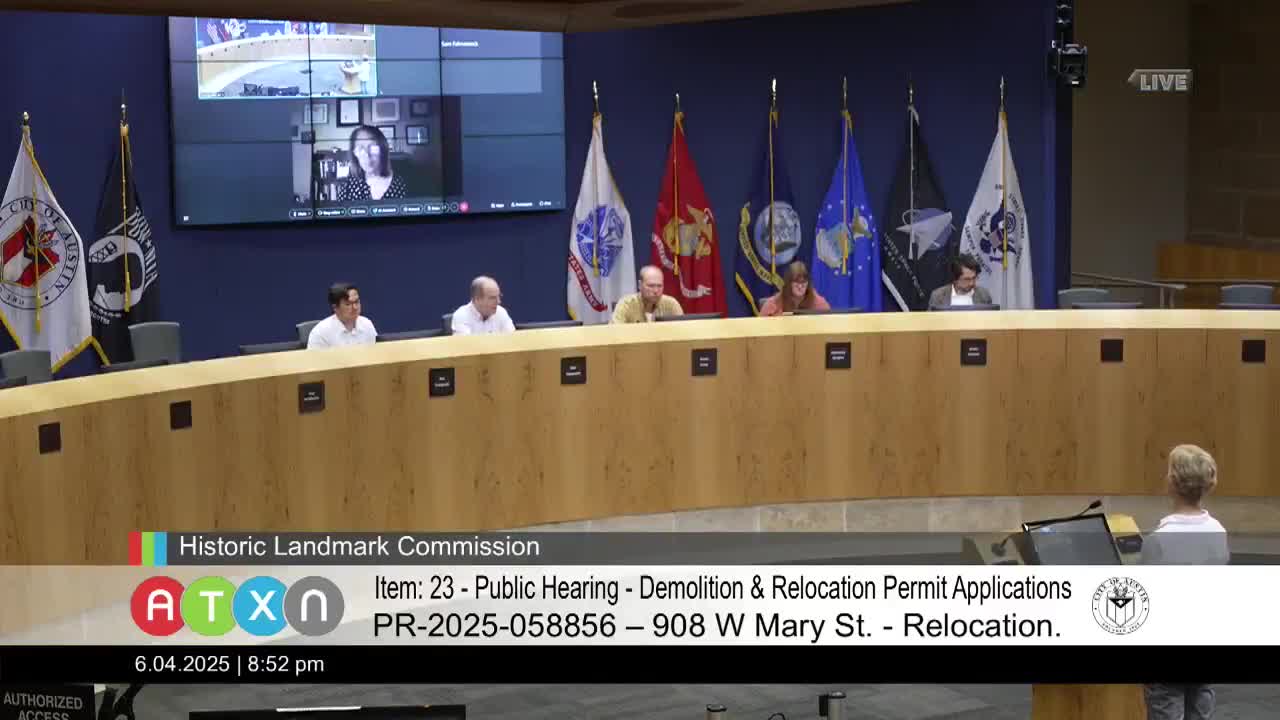Louella Crumley Galbraith reflects on historic Mary Street home and neighborhood roots
June 04, 2025 | Austin, Travis County, Texas
This article was created by AI summarizing key points discussed. AI makes mistakes, so for full details and context, please refer to the video of the full meeting. Please report any errors so we can fix them. Report an error »

A historic house in Austin is set to be cut into two pieces, sparking a wave of nostalgia and community memories. During a recent government meeting, Louella Crumley Galbraith, an 86-year-old resident, shared her heartfelt connection to the property at 908 West Mary Street, where she was born and raised.
Crumley Galbraith recounted the rich history of the house, which her parents purchased in 1938. At that time, it was on the outskirts of town, serving as a vital hub for the neighborhood before the rise of supermarkets. She painted a vivid picture of life in the area, where local businesses thrived and community bonds were strong. "There were no supermarkets or shopping centers. Most people didn't have cars, so the neighborhood was like a small town," she said.
The house not only housed her family but also served as a gathering place for musicians, including the Asleep at the Wheel band, who played there after her parents passed away. Crumley Galbraith's memories included the sounds of laughter, music, and the daily rhythms of life that defined her childhood.
As the discussion unfolded, it became clear that the house represents more than just a structure; it embodies the spirit of a bygone era and the deep connections of the community. Crumley Galbraith emphasized the importance of preserving the history tied to the property, stating, "The whole corner there down through the stores I consider to be historic."
The decision to cut the house into two pieces raises questions about the future of such historic sites in Austin. As the city continues to evolve, the challenge remains to balance development with the preservation of its rich cultural heritage. The community's response to this decision will likely shape the narrative of Austin's history for years to come.
Crumley Galbraith recounted the rich history of the house, which her parents purchased in 1938. At that time, it was on the outskirts of town, serving as a vital hub for the neighborhood before the rise of supermarkets. She painted a vivid picture of life in the area, where local businesses thrived and community bonds were strong. "There were no supermarkets or shopping centers. Most people didn't have cars, so the neighborhood was like a small town," she said.
The house not only housed her family but also served as a gathering place for musicians, including the Asleep at the Wheel band, who played there after her parents passed away. Crumley Galbraith's memories included the sounds of laughter, music, and the daily rhythms of life that defined her childhood.
As the discussion unfolded, it became clear that the house represents more than just a structure; it embodies the spirit of a bygone era and the deep connections of the community. Crumley Galbraith emphasized the importance of preserving the history tied to the property, stating, "The whole corner there down through the stores I consider to be historic."
The decision to cut the house into two pieces raises questions about the future of such historic sites in Austin. As the city continues to evolve, the challenge remains to balance development with the preservation of its rich cultural heritage. The community's response to this decision will likely shape the narrative of Austin's history for years to come.
View full meeting
This article is based on a recent meeting—watch the full video and explore the complete transcript for deeper insights into the discussion.
View full meeting
